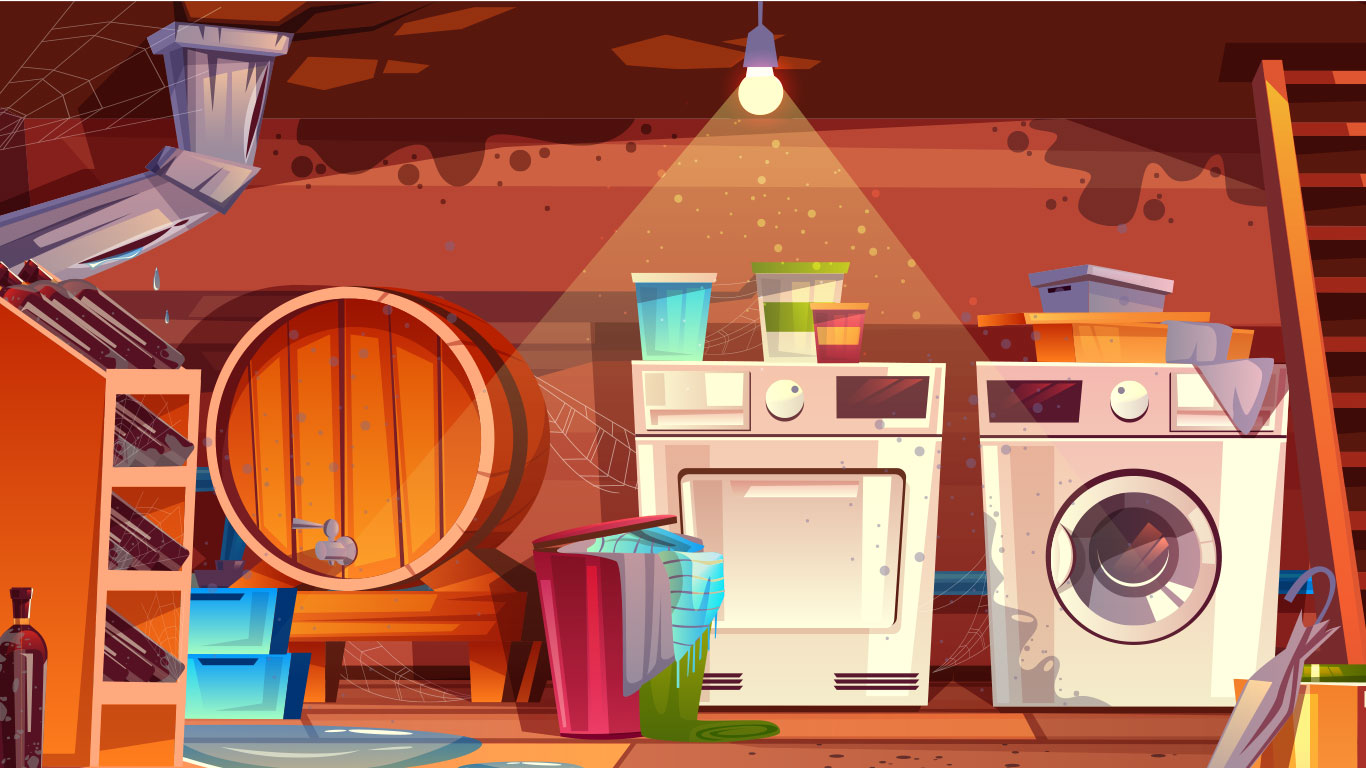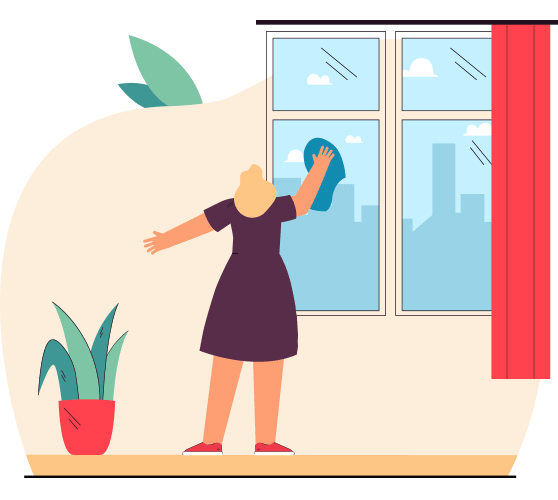
If you’ve suffered damage from floods or consistently experience wet and humid conditions, mould could be lurking in your home.
Unfortunately, here in Australia, our homes are prone to mould, given our climate.
The good news is that removing and preventing mold in house is relatively simple.
In our guide, we’ll explain what mould is, why it’s a health hazard, how to get rid of it, and how to prevent it from returning.
At one time or another, most of us have lived (or now live) in a house or apartment where we noticed a nasty black substance growing on the wall or ceiling.
One that seemed to get bigger each time we looked at it.
That nasty splodge would be mould, which is a type of fungus.
And it’s everywhere.
Not just where you can see it.
Mould can also be found in the air and in food.
That’s right. Food.
Gross.
We’re talking cereals, spices, coffee, dairy products and nuts – especially those you buy from supermarket tubs because you want to save some dough.
Mould can even hitch a ride home with you after attaching to:
And if its final destination is somewhere even slightly damp, it will grow and multiply.
Ew.
Get a Fast Air Con
Quote Today!
Any part of your home that gets wet is likely to be mouldy.
Look for:
If you’ve got a dark spot in your home and aren’t sure if it’s just a splodge of dirt or an old stain, here’s how to tell if it could be mould:
A damp home is a breeding ground for mould.
If you allow moisture to build up in your indoor spaces, mould takes that as an invitation to move on in.
Mold in house is more than just a cosmetic problem. It can damage your home and contribute to health issues.
Sometimes mould is obvious, but it can also be hard to recognise.
It resembles a stain, smudge, spots, fuzz, or discolouration. It’s typically black, green or white, but you may also find it in grey, orange, pink and brown.
The big giveaway is the smell.
Places you’ll commonly mold in house:

Mould produces spores in order to reproduce.
These spores are carried in the air and can cause serious health problems.
Not only can mould bring on its own symptoms, but it can also make you more susceptible to other illnesses.
For most people, just touching or inhaling mould spores can cause:
Some people need to be extra careful. People who may be ultra-sensitive to mould are:
But, before you whip out the cleaning supplies, first:
Suited up and ready to kick that nasty mould to the curb?
Then use these simple cleaning tips to remove mold in house.

Hello Breeze Pro Tip!
If you’ve used bleach at any time, allow surfaces to air dry to maximise their contact time with the bleach.
Sometimes a mould infestation is too much for us to tackle alone.
Don't take a chance with the potential health risks that mould can cause you and your family.
Seek out a professional contractor with experience in the safe removal of mould if:
Keeping indoor humidity levels below 50% will prevent moisture build-up. The best way to do that, is with a reverse-cycle ducted or split system air conditioner.
Not only will you have a sweet-as climate-controlled home year-round, but an air-conditioning system will remove excess moisture in the air through dehumidification.
Your home will also be:

Dehumidification helps you feel more comfortable without the need to set the thermostat to ‘arctic’.
You’ll feel less clammy, sweaty and tired as the air feels lighter.



Dehumidification maintains a reasonable humidity level indoors, helping every family member breathe easier.
If you or any family member suffers from allergies or asthma, shop for an air conditioner approved by the National Asthma Council of Australia, such as the Daikin reverse-cycle split system.
Plus, bread and cereals will remain fresher for longer without going stale.

Indoor air that’s free from dampness, mould and mildew smells fresh and inviting. Dehumidification helps remove the musty smell that can accompany mold in house.



Excess moisture or humidity in your home increases the potential to develop mould on your clothing, furniture, curtains, bed linen, towels and other fabrics.
Dehumidification alleviates this problem and helps prevent tools, computer equipment and electronic equipment from rusting or corroding.

Switch on the dehumidification setting to reduce dust in your home. Less dust means less time spent with the feather duster and Hoover.



High humidity makes rooms feel warmer than the actual temperature, and you’ll naturally reach to lower the thermostat to cool your home faster.
However, with the flick of a switch to a dehumidification setting, your AC will run more efficiently, reducing energy costs.
Make your life a little easier and cooler, and install a kick-ar*e air conditioning system from Hello Breeze. Take a look at our split systems and ducted systems now.
If you’re unsure which type suits your home, lifestyle or budget, no worries – this is where we shine! Our climate control Specialists are more than happy to talk you through it.
So, c’mon, mate! Get on the blower and have a mag with us on 1300 712 732, and ask us for a quote on a world-class air conditioner installation for your home.